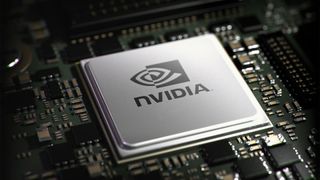Nvidia's fastest next-gen GPU reportedly enters testing phase
Late-stage development could be well under way.

September will mark two years since the initial launch of Nvidia's RTX 30 series. Though it's been mere weeks since the launch of the most powerful and likely the last card in the range, the RTX 3090 Ti, enthusiast attention is looking ahead to the future RTX 40 series.
A new tweet from reliable hardware leaker kopite7kimi claims the high end AD102 GPU has entered the testing phase. This is the GPU that's expected to power the likes of the RTX 4090 and RTX 4080 (assuming that's the naming scheme Nvidia goes with).
If the card has indeed entered testing, then that's a great sign the development is well advanced. Barring any unforeseen consequences, the design of the GPU is likely finalized, meaning that working cards and drivers are in-house. That doesn't mean the release is imminent, though. Driver development takes time. There are all kinds of checks and milestones to pass before a driver can be considered release-ready.
It's a good sign, though. Assuming yields are acceptable, frequency targets are being met and there are no as yet undiscovered errata, then odds are good that the card is on track to release in 2022.
Ignore these fanboys, let's turn our attention to GPU. AD102 has started testing. https://t.co/yziVJE8eFpApril 19, 2022

Best CPU for gaming: The top chips from Intel and AMD
Best gaming motherboard: The right boards
Best graphics card: Your perfect pixel-pusher awaits
Best SSD for gaming: Get into the game ahead of the rest
There have been quite a few leaks about Nvidia's next gen Ada Lovelace GPUs, at least the flagship chip anyway. The safest bet of all is that the cards will include 12+4 pin PCIe 5.0 power connectors which can deliver up to 600W. Add to that persistent rumours that the high-end cards will use all of that 600W, if not more, suggests Nvidia is going for performance at all costs.
The range is expected to be built using a customized TSMC 5nm node. That's a big jump from the 8nm Samsung node used by the RTX 30 Ampere series of cards. Normally that would lead to improved power efficiency if all else was equal, but when you add in the higher power budget, increased transistor density, higher shader count, higher clocks and architectural improvements, then we should be looking at a rather dramatic performance uplift. Well, hopefully. We'll have to wait a while to see real game benchmarks.
The cards are likely to make use of 24Gbps GDDR6X memory, which by itself will consume a not insignificant amount of power. Previous leaks suggest up to 18432 shaders compared to the 10752 of the 3090 Ti. We can also expect increases in RT and tensor cores leading to improved ray tracing and AI capabilities. In short, the high-end Ada Lovelace cards are shaping up to be monsters in every aspect. Will four slot AIB cards become the new norm?
The biggest gaming news, reviews and hardware deals
Keep up to date with the most important stories and the best deals, as picked by the PC Gamer team.
Nvidia is expectedly tight-lipped regarding anything to do with its unreleased products. But if the cards are indeed in testing, then a release sometime in the second half of 2022 is looking like a safer and safer bet. Bring on the leaks.

Chris' gaming experiences go back to the mid-nineties when he conned his parents into buying an 'educational PC' that was conveniently overpowered to play Doom and Tie Fighter. He developed a love of extreme overclocking that destroyed his savings despite the cheaper hardware on offer via his job at a PC store. To afford more LN2 he began moonlighting as a reviewer for VR-Zone before jumping the fence to work for MSI Australia. Since then, he's gone back to journalism, enthusiastically reviewing the latest and greatest components for PC & Tech Authority, PC Powerplay and currently Australian Personal Computer magazine and PC Gamer. Chris still puts far too many hours into Borderlands 3, always striving to become a more efficient killer.
Most Popular





